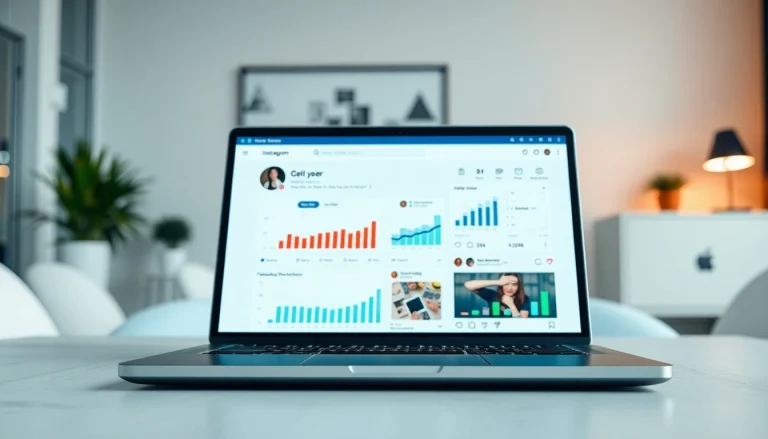Understanding Competitive Intelligence Services
What Are Competitive Intelligence Services?
Competitive intelligence services encompass a systematic approach to gathering, analyzing, and disseminating actionable information regarding competitors, market conditions, and consumer behaviors. These services are essential for businesses that wish to navigate the complexities of their industries effectively. The process typically involves both primary and secondary research methodologies to gather data on competitors’ offerings, pricing strategies, market positioning, and customer engagement techniques.
In essence, competitive intelligence serves as a cornerstone for strategic decision-making. By employing competitive intelligence services, organizations can position themselves advantageously within their respective markets, identify growth opportunities, and preemptively address potential threats from rivals.
The Importance of Competitive Insights for Businesses
In the fast-paced and ever-evolving business landscape, understanding competitive dynamics is vital for sustained success. Competitive insights are not just optional; they are a necessity. Here are several reasons why:
- Informed Decision Making: Access to accurate data helps leaders make well-informed decisions that are aligned with market trends.
- Risk Mitigation: Identifying competitors’ strengths and weaknesses allows businesses to navigate potential risks more effectively.
- Innovation and Adaptation: Monitoring industry trends and competitor innovations encourages businesses to adapt their offerings and remain competitive.
- Enhanced Market Positioning: With detailed analyses, companies can position their products or services more strategically, catering to unmet needs or gaps in the market.
Key Components of Competitive Intelligence
Effective competitive intelligence involves several critical components:
- Data Gathering: This includes both qualitative and quantitative research, such as surveys, interviews, and analysis of public data sources.
- Data Analysis: Using analytical tools to interpret the data gathered is essential for deriving meaningful insights.
- Reporting: Delivering clear and actionable reports that provide insights to stakeholders is crucial for implementation.
- Feedback Loop: Establishing mechanisms to continuously update and refine strategies based on new intelligence ensures ongoing relevance and competitiveness.
How to Implement Competitive Intelligence
Steps to Develop a Competitive Intelligence Strategy
Building a competitive intelligence program requires a strategic framework. Here’s how to develop an effective strategy:
- Define Objectives: Pinpoint what you want to achieve with your competitive intelligence efforts. Is it understanding market entry strategies, pricing tactics, or product innovation?
- Identify Key Competitors: List out competitors to include in your analysis. Define what makes them relevant to your business.
- Determine Information Needs: What specific information would be beneficial for your strategy? This could involve anything from sales figures to marketing campaigns.
- Choose Research Methods: Decide between qualitative interviews, surveys, or quantitative data analysis. Aim for a mix of both for a holistic view.
- Implement Data Collection: Begin gathering data through your chosen methods, ensuring compliance with legal and ethical standards.
- Analyze and Report: Once the data is collected, analyze it to extract meaningful insights and present them in an accessible format.
- Create an Action Plan: Develop strategies based on your findings to implement within your business.
Tools and Resources for Effective Intelligence Gathering
To optimize your competitive intelligence efforts, leveraging technology and tools is key:
- Web Scraping Tools: Platforms like Scrapy and ParseHub can collect vast amounts of competitor data across various websites.
- Social Media Monitoring: Tools such as Hootsuite or Sprout Social help track competitors’ activities and consumer sentiment on social media platforms.
- Analytical Software: Google Analytics and Tableau can aid in analyzing traffic data and visualizing insights drawn from various data sources.
- Market Research Platforms: Accessing reports from platforms like Statista or IBISWorld can provide invaluable industry insights.
Best Practices in Competitive Analysis
To ensure the effectiveness of your competitive intelligence activities, consider implementing the following best practices:
- Stay Objective: Use data and evidence to guide analyses, avoiding biases that can skew interpretations.
- Regular Updates: The market changes constantly; therefore, ensure that your competitive intelligence is routinely revisited and updated.
- Collaboration Across Teams: Leverage insights from various departments (marketing, sales, product development) to enrich the understanding of competitive dynamics.
- Legal Compliance: Always adhere to legal and ethical guidelines when collecting and using data.
Types of Competitive Intelligence Services Available
Market Research and Trend Analysis
Market research forms the foundation of competitive intelligence. This involves analyzing trends within the market to forecast potential shifts that could affect your business.
Understanding market trends aids in:
- Identifying consumer preferences and behaviors.
- Spotting emerging technologies that could alter the competitive landscape.
- Analyzing economic indicators that may impact your industry.
For effective market research, consider both primary methods (surveys, focus groups) and secondary sources (industry reports, academic journals). Combine these insights to form a well-rounded view of market conditions.
Competitor Profiling and Benchmarking
Competitor profiling involves gathering detailed information about key rivals. This can include:
- Product offerings and their unique selling propositions.
- Pricing strategies and discount structures.
- Market share analysis and positioning in the industry.
- Sales and marketing tactics, including promotional strategies and engagement methods.
Benchmarking compares your performance metrics against those of your competitors, helping identify areas for improvement. This process not only highlights strengths but also reveals weaknesses in your own strategy.
Customer Insights and Sentiment Analysis
Understanding customer sentiment is crucial in today’s customer-centric environment. This aspect of competitive intelligence utilizes various tools to gauge customer feedback and perception. Techniques include:
- Surveys and reviews to collect direct feedback.
- Social listening tools to analyze mentions and discussions about your brand and competitors online.
- Sentiment analysis software that uses AI to interpret emotions expressed in customer interactions.
By synthesizing these customer insights, businesses can adjust their offerings and communication strategies to better meet the target audience’s needs.
Measuring the Impact of Competitive Intelligence
Performance Metrics for Competitive Intelligence Activities
To evaluate the effectiveness of your competitive intelligence efforts, specific performance metrics should be established:
- Impact on Sales: Assessing any correlation between intelligence activities and sales growth can establish direct ROI.
- Market Position Changes: Analyze whether competitive intelligence initiatives have contributed to improved market positioning.
- Speed of Decision-Making: Measure whether informed insights help in making quicker, more effective decisions.
- Customer Satisfaction Levels: Monitoring changes in customer feedback post-implementation of insights will indicate success.
Case Studies: Success Stories from Competitive Insights
Businesses that have harnessed competitive intelligence effectively often have compelling case studies to share:
For instance, a leading software company leveraged competitive intelligence to identify a gap in the market for productivity tools specifically designed for remote teams. By analyzing competitors, they uncovered user pain points and developed an innovative solution that significantly increased their market share within a year.
Another case reflects a consumer goods manufacturer that used competitive insights to streamline its supply chain processes in response to competitors’ pricing tactics. This proactive approach allowed them to maintain market competitiveness while enhancing profitability.
Adjusting Strategies Based on Intelligence Findings
The ultimate goal of competitive intelligence is to refine business strategies based on data-driven insights. Some common adjustment strategies include:
- Realigning marketing messages to resonate better with current consumer wants.
- Introducing new product features that differentiate from competitors.
- Reevaluating pricing structures in light of competitor movements.
- Enhancing customer service protocols based on feedback trends.
Adjusting strategies should be an iterative process, closely tied to the ongoing intelligence findings.
Future Trends in Competitive Intelligence Services
The Role of AI and Automation in Intelligence Gathering
The future of competitive intelligence is increasingly intertwined with artificial intelligence and automation. AI can process vast amounts of data more efficiently than humans, identifying patterns and trends that may not be apparent otherwise. Automation can streamline data collection from various sources, enabling teams to focus on analysis and actionable insights.
As technology evolves, leveraging machine learning algorithms for real-time analytics could become crucial, allowing businesses to respond swiftly to changes in competitor behavior and market dynamics.
Integrating Market Intelligence with Overall Business Strategy
Successful organizations will increasingly view competitive intelligence as an integral part of their overall business strategy, rather than a separate function. This means incorporating insights into strategic planning processes, product development cycles, and marketing strategies.
Strategic alignment across departments ensures that all aspects of the business are moving in concert toward common goals informed by robust intelligence. This holistic approach can significantly enhance competitiveness and responsiveness in the market.
Adapting to Rapid Changes in Market Dynamics
As market dynamics continue to shift rapidly due to technological advancements, consumer preferences, and economic fluctuations, businesses must prioritize adaptability. This requires not only proactive competitive intelligence efforts but also creating organizational flexibility to respond to new information swiftly.
Companies that build a culture of continuous learning and adaptation will likely thrive, as they can pivot based on real-time insights and emerging trends.







